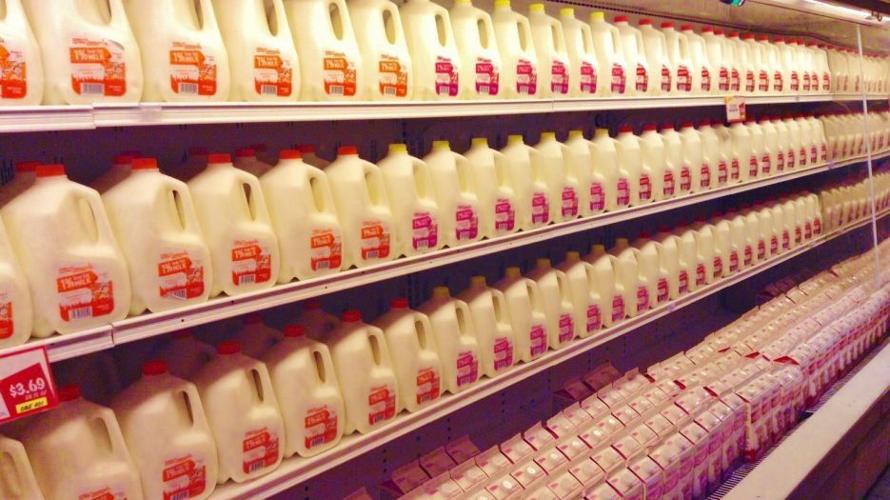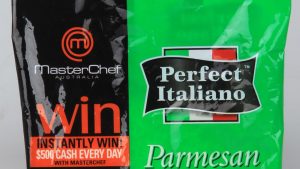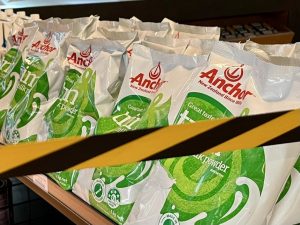• Australia increased 67 percent.
• MENA increased 26 percent.
• Caribbean increased 31 percent.
Weaker sales to China, Japan and Mexico did little to dampen overall volumes.
The rest of the dairy complex saw similarly mixed results. Total whey exports declined by 5 percent, primarily driven by softer sales of protein. But dry whey and modified whey – primarily whey permeate – both saw modest gains for the month, though lactose sales softened. And in a welcome development for cream markets, butter and AMF exports soared by 236 percent, with U.S. butterfat at a significant discount to product from Europe and Oceania.
Looking ahead, the outlook for U.S. exports remains murky given the uncertain policy environment. Yet despite the uncertainty, the United States still has significant opportunities to grow its exports abroad.
Butterfat had huge export growth in January, increasing 145 percent, and here we are again … with even larger growth in February. Butterfat increased 236 percent.
Canada and Mexico were the primary destinations for butterfat growth in February, but for different products. U.S. exports of butter primarily grew to Canada – increasing 105 percent – while AMF exports surged to Mexico by 9,500 percent. The United States’ closest neighbors were far from the only countries that improved.
Butter exports increased to several locations.
• Japan by 164 metric tons from zero in February 2024
• Central America and the Caribbean by 60 percent
• Europe by 85,647 percent
They all saw rapid growth albeit against small volumes. Several factors are driving the U.S. export expansion into butter, but the two primary factors are a well-supplied domestic market and a large global price gap.
The U.S. domestic market continues to be well-supplied – both butter production and cold storage are increasing, and cream remains plentiful. Retail butter demand is strong, but weakness in food service is slowing overall disappearance, with January domestic use having decreased by 3.3 percent. Readily available butter supplies and ample cream supplies paired with softer total domestic use are decreasing prices. At the same time U.S. prices are easing, European and New Zealand prices are increasing – mostly from tighter supplies. As a result U.S. butter is at a significant price discount to the average global price and that large price gap is attracting interest in U.S.-origin butter – as evidenced by the widespread growth in February.
Most factors suggest the large U.S.-global price spread will continue in the coming months. Under normal circumstances that should spur additional U.S. butter exports. But the announcement of widespread U.S. tariffs is throwing a large amount of uncertainty into the equation. As of writing, few countries have placed retaliatory tariffs on U.S. dairy products but that may change in the coming weeks. That could potentially reduce demand as the effective cost to the importer of U.S. butter increases. Yet even with plenty of uncertainty, as long as the large price spread remains, expect more U.S. butter to be found on international shelves.
Dairy-protein exports under pressure
Overall U.S. export performance was mixed in February, but protein was one category that decreased decisively. Shipments of high-protein whey protein buckled, posting the weakest February figure since 2022. Except for an unexpected bump in January, exports of WPC80+ have trailed prior-year levels since August 2024. But the 17 percent decline seen for the month accelerated the decline and decreased exports to less than the 5,300-metric-ton threshold for the first time in more than two years.
Dramatically reduced demand from China and South America weighed on the overall WPC80+ figure. Exports for both high- and low-protein whey to China have been adjusted due to suspected misclassification. But an unexpected increase in demand came from Southeast Asia, where exports soared to 709 metric tons. That’s more than five times the volume that was exported in the same month the previous year.
Consumers worldwide continue to demonstrate enthusiasm for protein-rich products, but increasing prices have made buyers cautious. The average value of WPC80+ exports increased to $12,892 metric tons in February, marking the greatest price since August 2022. The last time prices rallied to these levels it caused a significant retrenchment in demand, and U.S. exports decreased precipitously. Anecdotal information from market stakeholders suggests that for now buyers are remaining loyal to whey proteins, failing to find acceptable reformulation alternatives. But the longer prices stay at these levels, the more severe the impact on demand is likely to be.
High-protein whey was not the only protein category that saw red as exports of whey-protein concentrates less than 80 percent also tumbled, decreasing 26 percent year over year. Slower shipments to Mexico and Southeast Asia were the main driver of the decline. Exports to China, however, increased by 75 percent.
Exports of other low-protein products increased, due in part due to strong Chinese demand. Dry-whey exports increased 8 percent in February, with Canada, South America and China seeing the largest increases. Meanwhile a 23 percent increase in permeate exports to China supported a 7 percent increase in exports for the category. Even though hog margins have tightened in China, persistent demand for low-protein whey suggests that pork producers are still optimistic that they will require additional feed this year.
China’s weakness in high proteins and stronger performance under Chapter 4 was likely connected with China’s retaliatory tariffs exempting product shipped under 0404.10. Additional Chinese tariffs on U.S. low-protein-whey products would likely halt the recent growth of dry whey and permeate to China.
Visit blog.usdec.org for more information.
You can now read the most important #news on #eDairyNews #Whatsapp channels!!!
🇺🇸 eDairy News INGLÊS: https://whatsapp.com/channel/0029VaKsjzGDTkJyIN6hcP1K


























